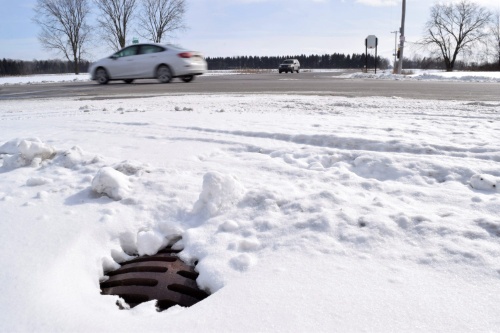
By: Kathy Johnson
Salt-speckled sidewalks, driveways and highways are synonymous with winter in the Great Lakes region. But while road salt is highly effective at deicing surfaces, the safety that salt provides for humans places a heavy burden on freshwater ecosystems.
“We have an unhealthy addiction to road salt,” said Claire Oswald, a hydrologist and associate professor at Ryerson University in Toronto, Ontario. Multiple studies dating back to the 1970s have shown that road deicing salt has a negative impact on soil, vegetation, wildlife, surface water, groundwater and human health. A 1984 study conducted by the Michigan Legislative Science Office states road deicing salts, “are contributing to major changes in the Great Lakes ecosystem,” particularly on sensitive environments like wetlands, ponds and streams. Additionally, the legislative study found road salts are contributing to a general degradation of groundwater quality for all users in the Great Lakes region.
In the late 1990s, Oswald said the Canadian government started to take a hard look at road salt usage and best management plans. The Canadian Water Quality Guidelines include the maximum thresholds for when chloride becomes harmful to amphibians, algae, aquatic plants, aquatic insects, fish and invertebrates like mussels, she said.
While maintaining safe roadways, parking lots and sidewalks is necessary, Oswald believes most people are not aware of the full environmental costs to freshwater systems from road salts.







Recent Comments